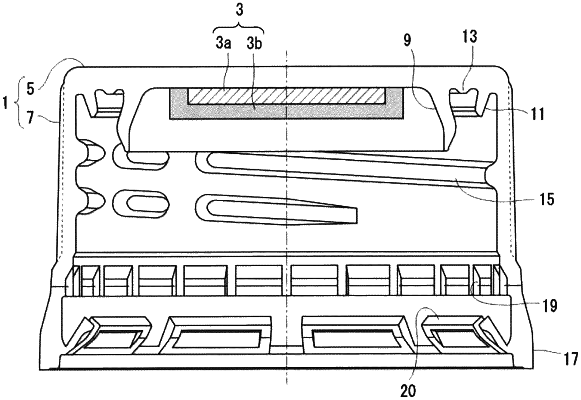| CPC B65D 41/0421 (2013.01) [C08L 23/06 (2013.01); C08L 2207/04 (2013.01); C08L 2207/066 (2013.01)] | 1 Claim |

|
1. A container lid comprising a high density polyethylene cap shell having a skirt section and a top plate section provided with an inner ring for intimate contact with an inner surface of a container mouth, and an in-shell molded body provided in a portion of an inner surface of the top plate section which is surrounded with the inner ring,
wherein the in-shell molded body is composed of a primary molded body, which has been formed by in-shell molding on the inner surface of the top plate section and which has an oxygen shielding function, and a secondary molded body which has been formed on the primary molded body by in-shell molding so as to cover the primary molded body and to be fused and fixed to the inner surface of the top plate section at a peripheral edge of the primary molded body,
the primary molded body has a structure in which a hydrogen generator is dispersed in a matrix of an olefin resin, and
the secondary molded body is formed from a resin composition containing linear low density polyethylene and a thermoplastic elastomer in an amount of 10 to 30% by mass, the resin composition having a melt flow rate at 190° C. of 1 to 10 g/10 minutes, a density of 0.900 to 0.920 g/cm3, and a nominal tensile strain at break, as defined by JIS K-6922-2, of 400% or more.
|